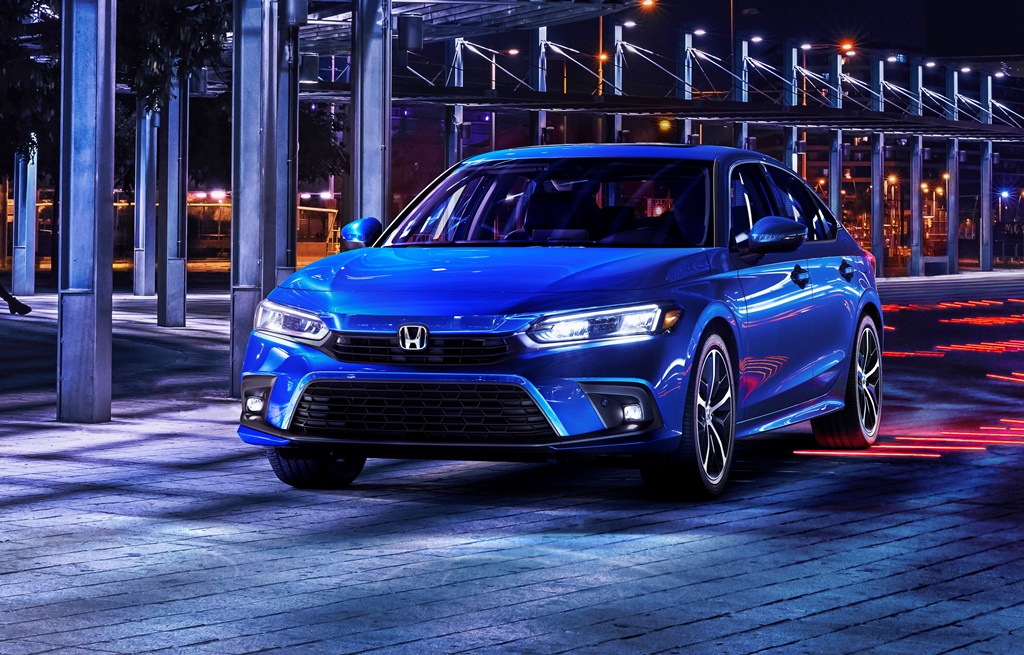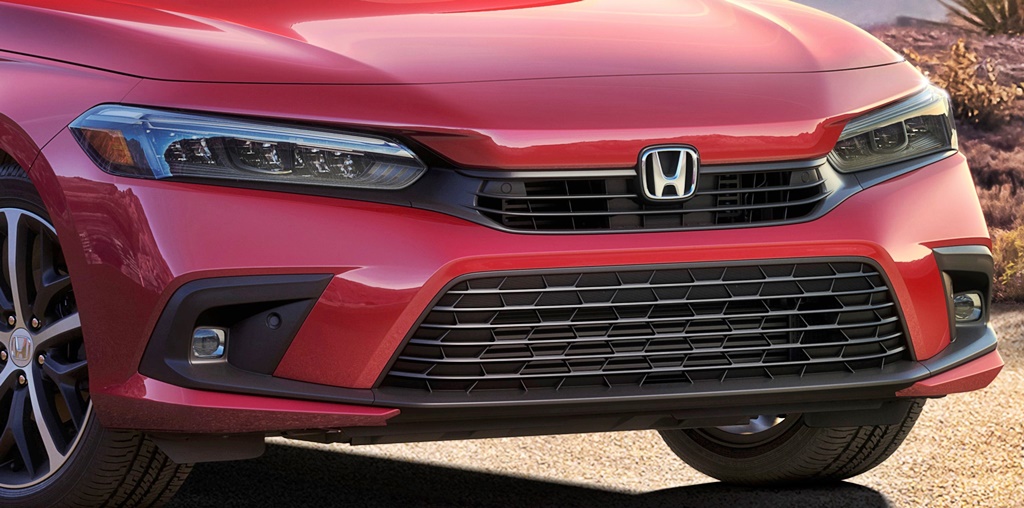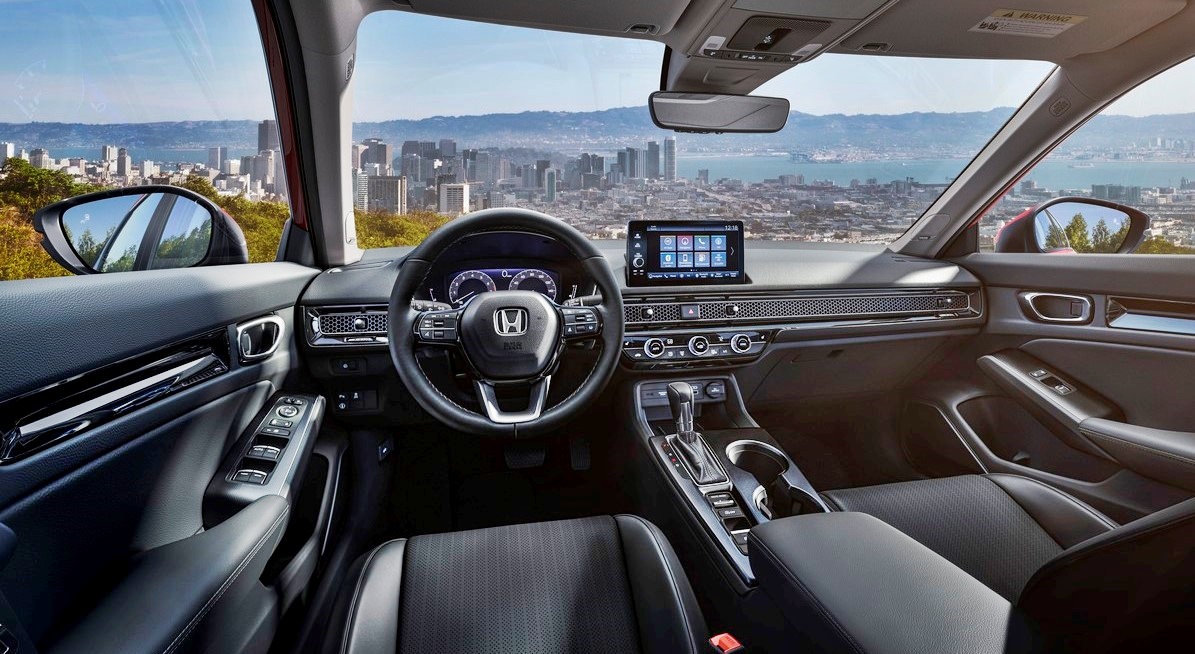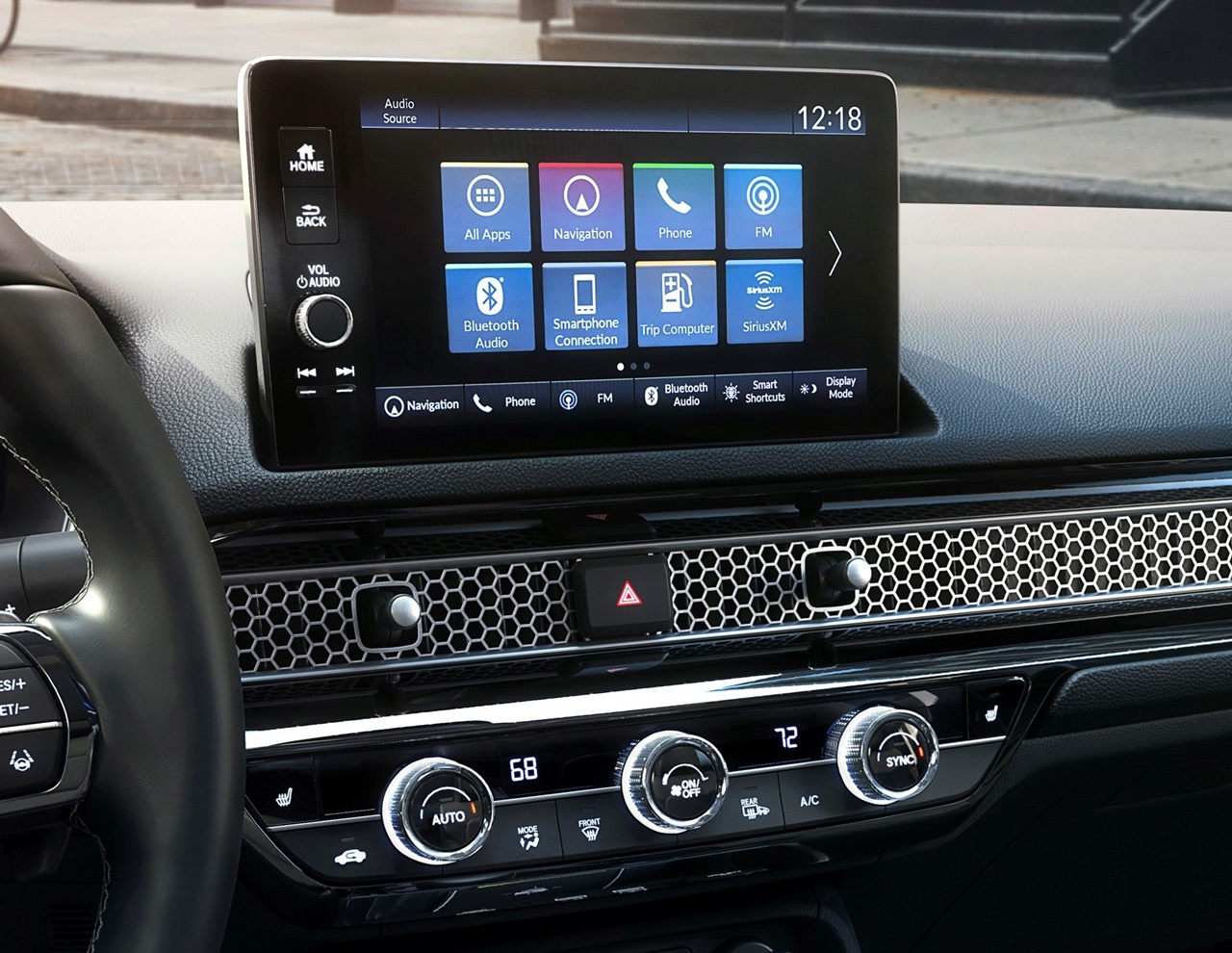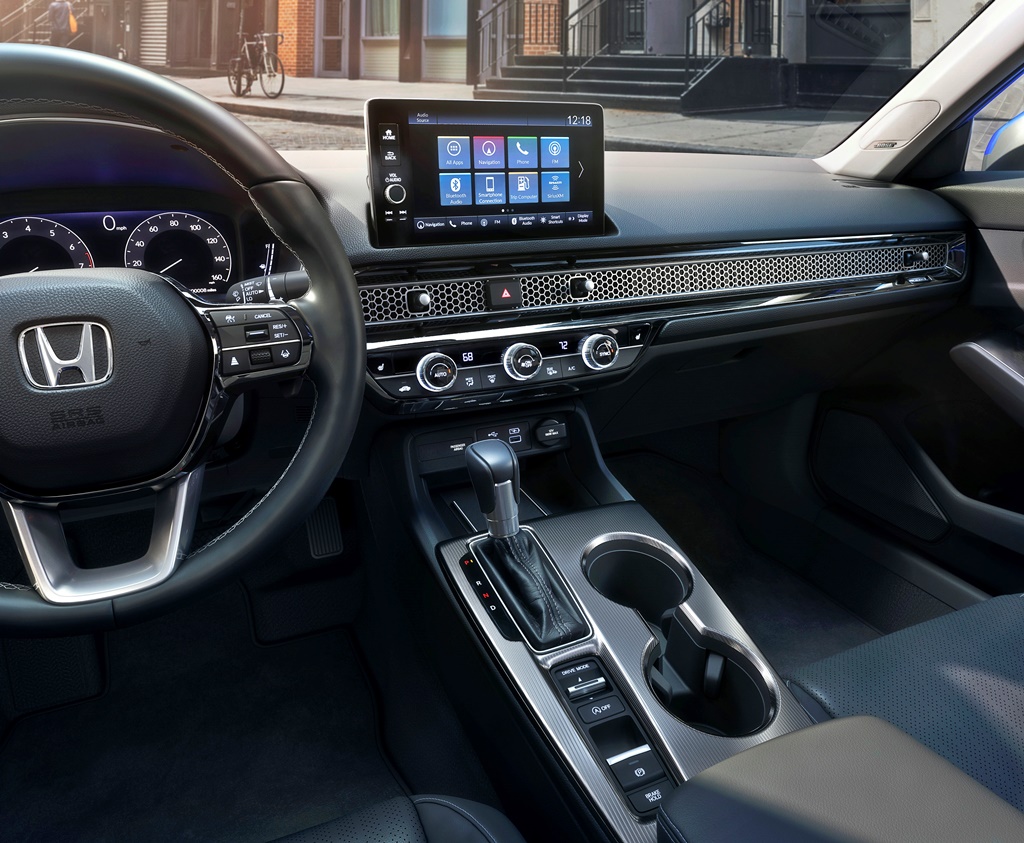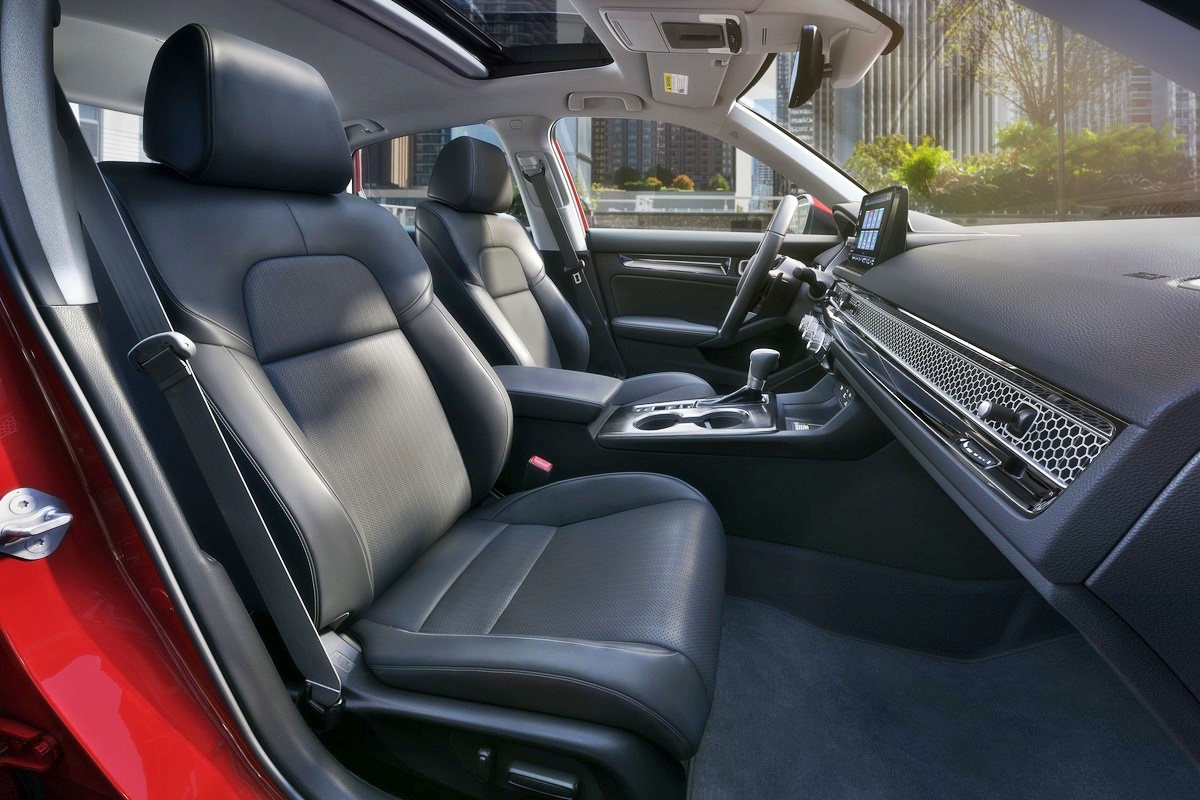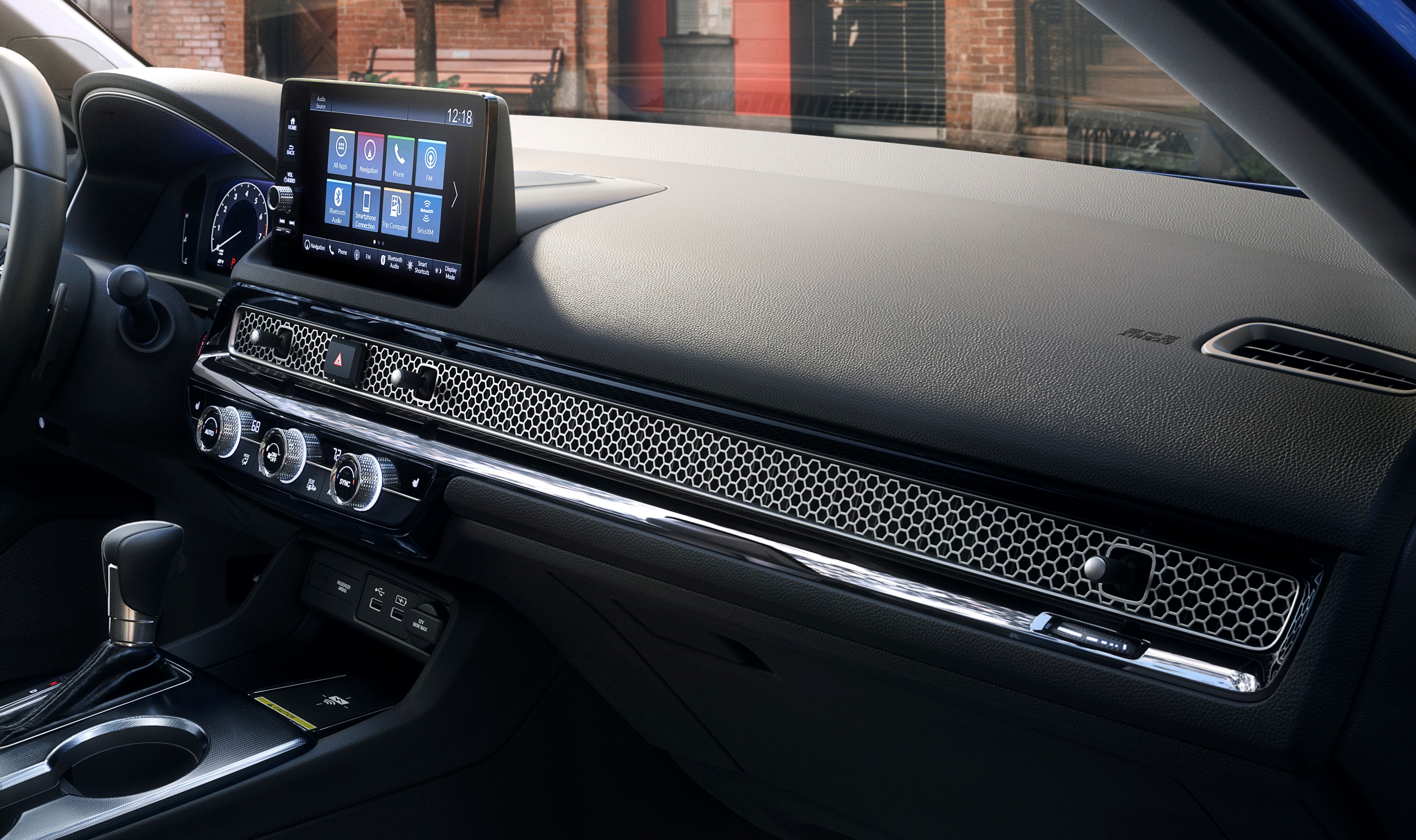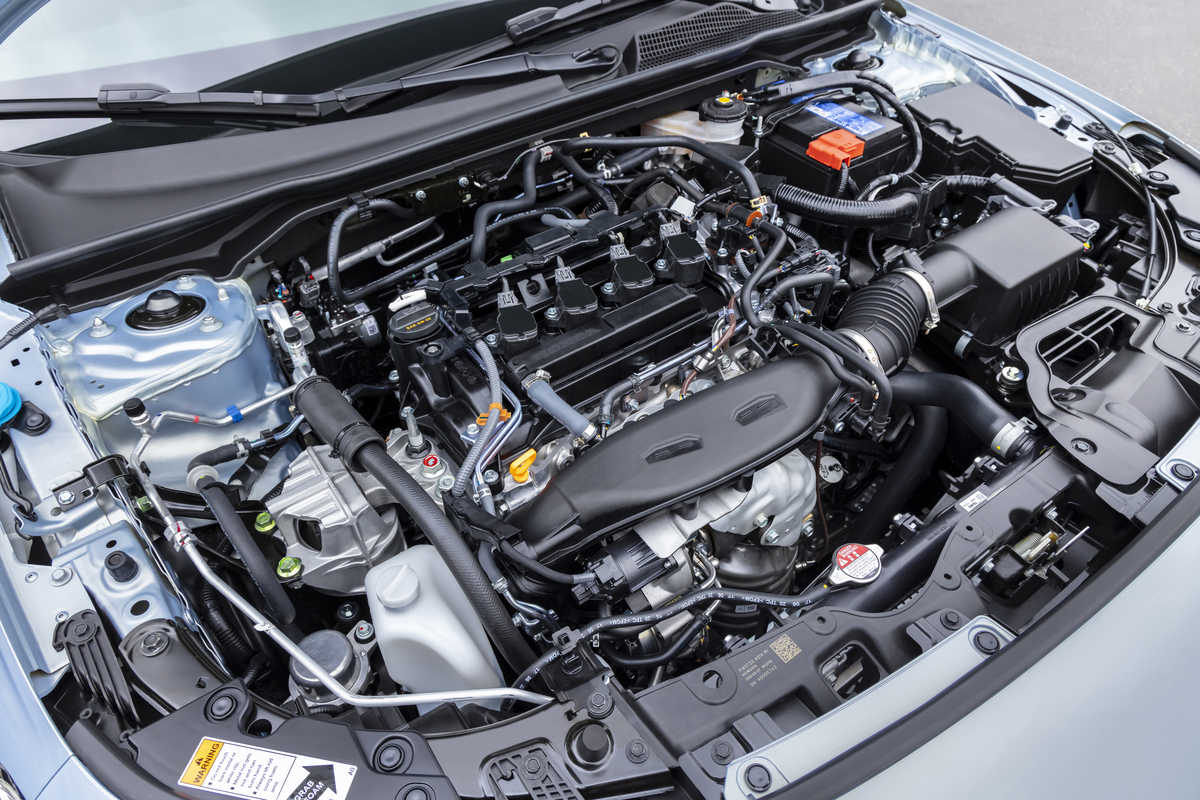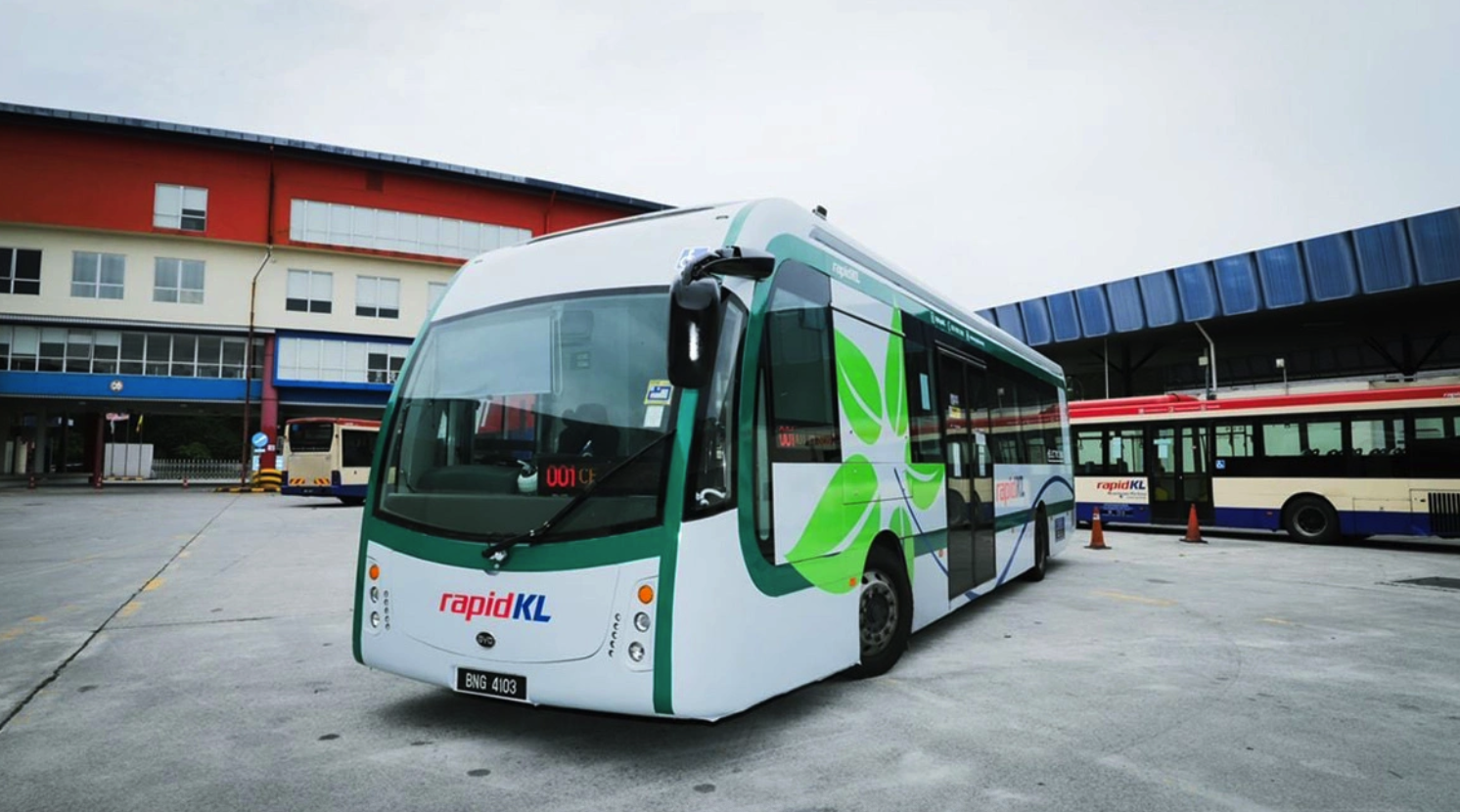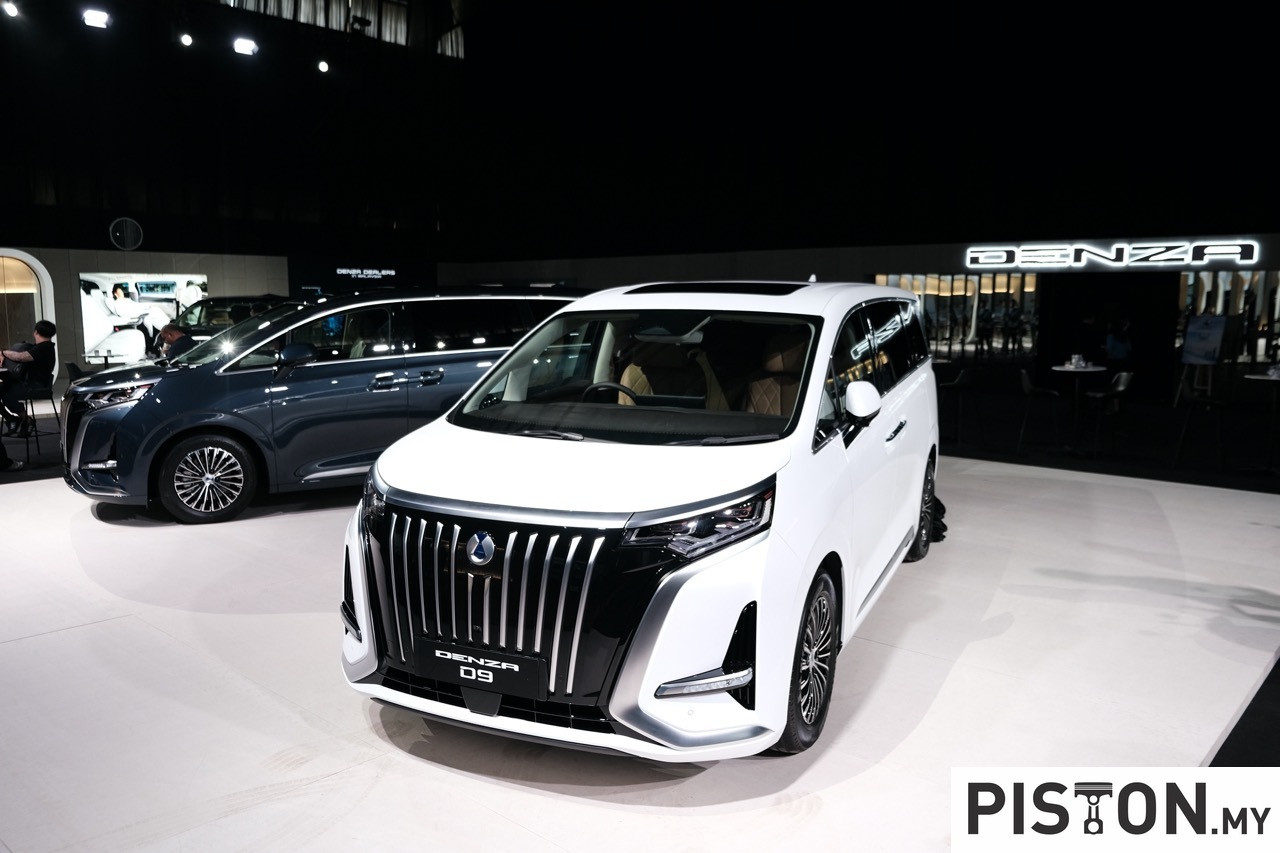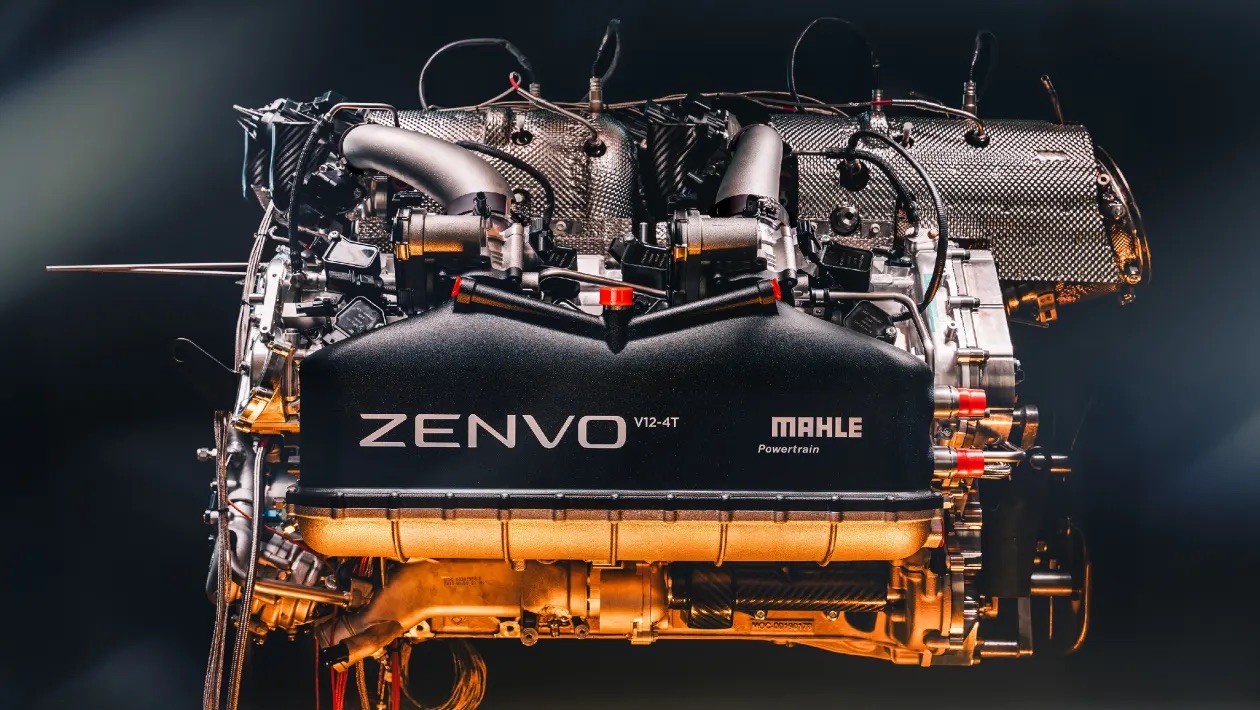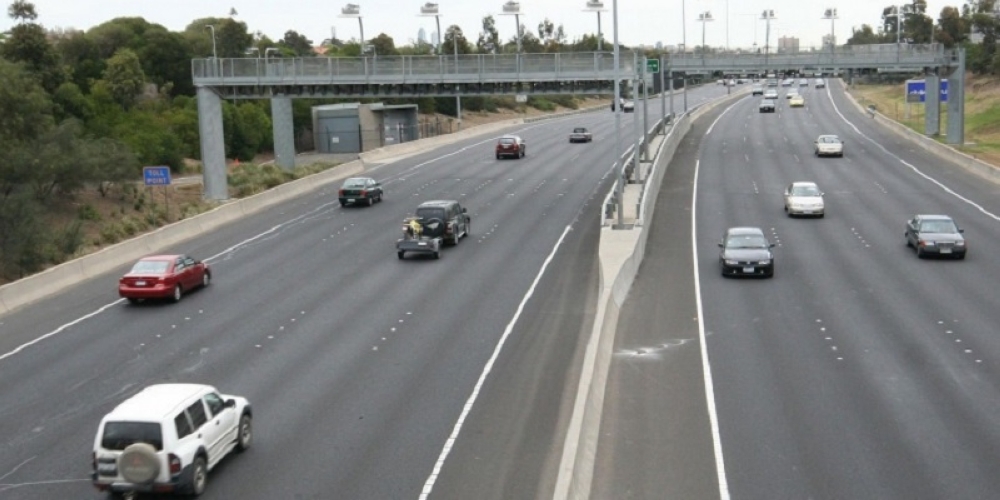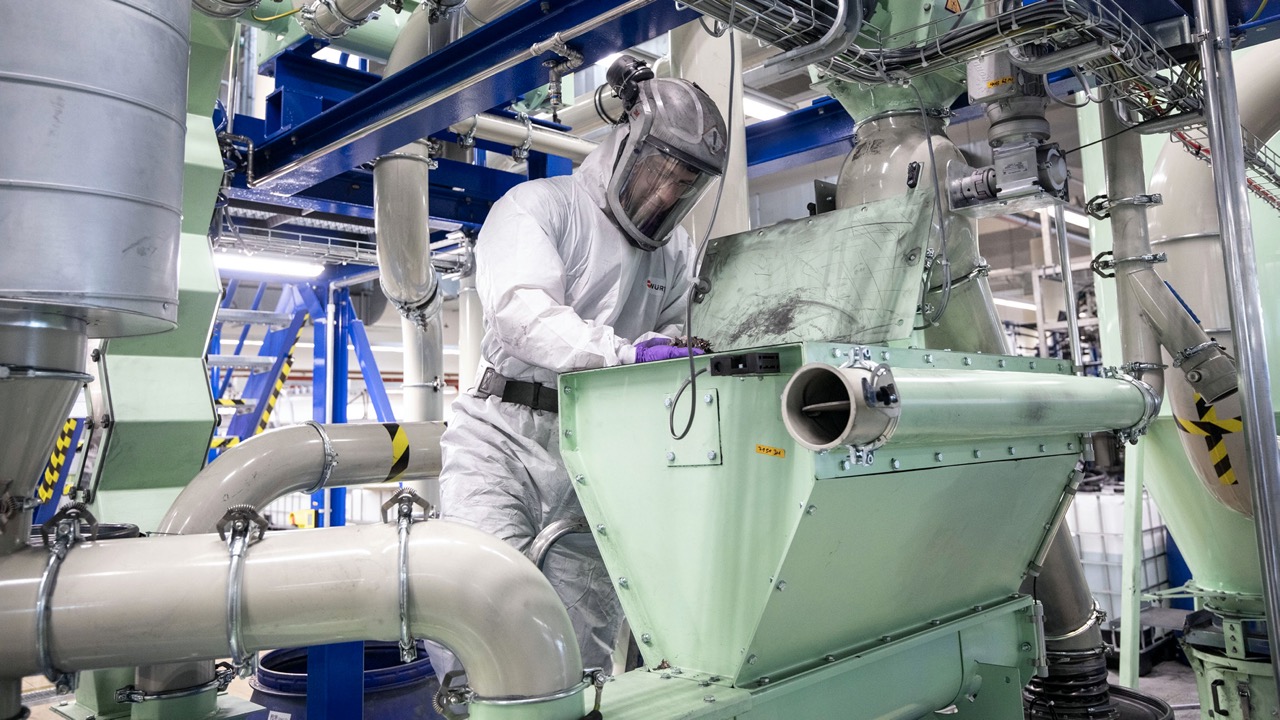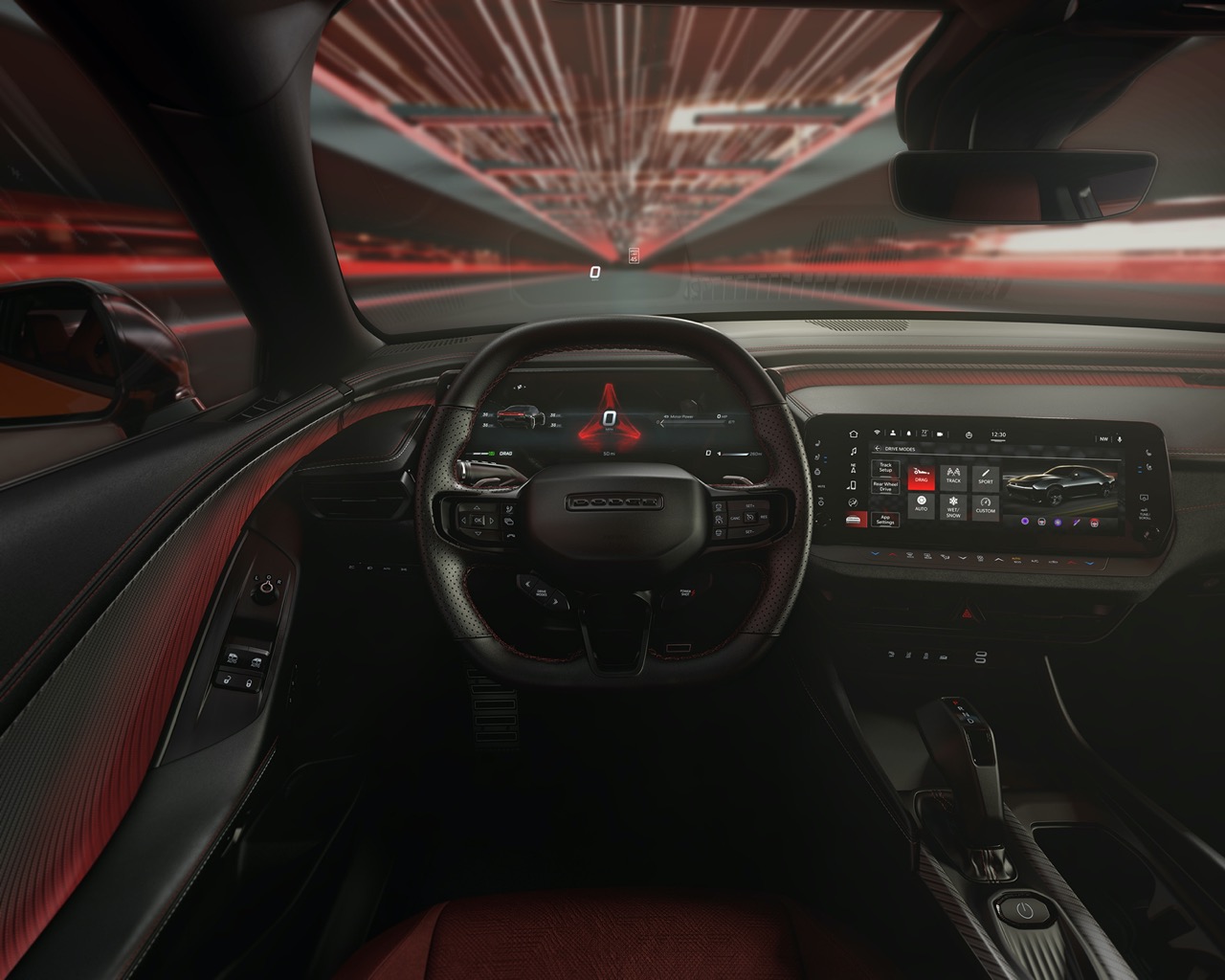It’s 2021 and just under 6 years from the time the 10th generation was introduced (in America), Honda has revealed a new generation of the Civic. With a history of almost 50 years, the 11th generation Civic continues the nameplate that was used for Honda’s first global car.
In designing the new Civic, Honda stylists and engineers revisited design concepts of previous generations, maintaining the brand’s original design approach of ‘Man-Maximum, Machine-Minimum’ (or ‘M/M’). Unlike the 10th generation which had a major design change from its predecessor, an evolutionary approach has been taken this time round for the 11th generation.
Subtle design changes
The body design is ‘thin and light’ with a low bonnet and front fenders, and the low horizontal beltline gives a low-slung look to the profile. Key to the new Civic’s styling was moving the bottom of the windscreen pillars further back rearward by 50 mm, which elongates its bonnet for a sleeker silhouette. This also visually connects the pillar to the front wheel hub, a subtle design element that emphasizes its wheels and tyres for a stable, planted stance.
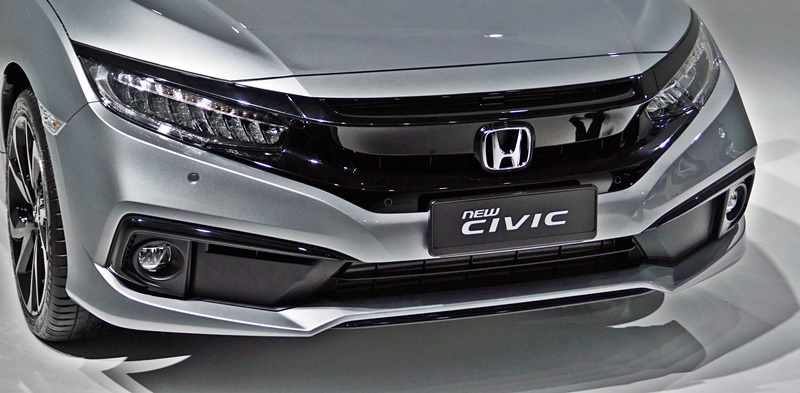
A low beltline with horizontal windowsills and door-mounted side mirrors improve visibility while maintaining the clean lines of the exterior. A sharp shoulder character line carves a gentle arc from the front fender to the taillights, giving continuity to the design. The lower character line carries up from the bottom of the front door, rising across the rear doors, and through the rear fenders for an enhanced sense of motion.
The additional stability provided by its new wider rear track is emphasized by stronger rear shoulders, wide-set taillights, and the upswept and aerodynamically efficient trailing edge of its bootlid. LEDs are used extensively for all the lighting units, offering benefits such as quick light-up time and longer life as well as low energy consumption.
Uncluttered cabin appearance
Inside, the M/M approach gives a simple, clean and modern look that is reminiscent of the early Civics. Back then, there were less electronic features so there was less ‘visual clutter’ and the interior designers have sought to replicate this for the latest model.
While the overall dimensions are not significantly changed (although the wheelbase has increased), which means the interior packaging continues to offer good head, leg, shoulder and hip room for all occupants. The sense of spaciousness is enhanced by the low, flat beltline and clean cabin layout, as well as the expansive view all round. The front seat design uses Honda’s Body Stabilizing Seat approach with a new-generation seat frame that firmly holds the body, enhancing comfort on long drives.
Further improving visibility is the top of the Civic’s instrument panel, which has been designed with minimum cutlines to reduce windscreen reflections and visual distractions. A striking metal honeycomb mesh accent stretches from door to door across the dashboard. It serves both form and function, creating a dramatic visual dividing line between the audio, information displays and climate controls, while the intricate flow-through design conceals the air vents for an uncluttered look.
High-quality materials are used throughout the interior, especially on touchpoints, with close attention paid to the operation of all switchgear and controls. Materials were also chosen with an eye toward practicality, such as the new premium centre console trim specifically designed to hide fingerprints and smudges to help maintain a high-end appearance.
Driver-focused technology
The instrument panel has become more high-tech with partial or full digital displays, depending on the variant. Top variants will have the Civic’s first all-digital LCD instrument display measuring 10.2 inches with a high-definition full-colour LCD panel. A ‘surprise-and-delight’ feature – the brake lights, headlights and turn signals of the displayed Civic vehicle image turn on and off when activated or deactivated.
For the North American market, where the new Civic will be manufactured at two locations, Honda is installing a Bose Premium Sound System for the first time (in the model). The system has been custom-engineered precisely for the best sound quality and reproduction in the Civic’s cabin. Expert audio engineers developed the Bose sound system with advanced components and technologies, working closely with Honda engineers to integrate the system early in the vehicle design process.
Stiffer body structure
The 11th-generation Civic body structure is said to be the most rigid in Civic history, with an 8% improvement in torsional rigidity and 13% improvement in bending rigidity versus the previous generation. This stiffer structure supports improvements in ride, handling and NVH.
As with other models, Honda’s Advanced Compatibility Engineering structure is designed to meet present and anticipated future collision standards while minimizing additional weight. This is achieved with the extensive use of lightweight materials, such as aluminium and various grades of high-strength steel, as well as an expanded application of structural adhesives. The new, stiffer body also reduces the transmission of road and wind noise to create a more relaxed driving environment.
Drivetrain choices
Engine choices will differ from region to region although the two 4-cylinder engines – a naturally aspirated 2.0-litre or a turbocharged 1.5-litre – are likely to continue to be offered for ASEAN versions. Both are paired with an updated CVT and are said to have improved fuel efficiency.
The suspension system has been tuned to take maximum advantage of the stiffer body structure and lengthened wheelbase for a smoother ride, while improving sporty handling. The front MacPherson struts have new low-friction ball joints and front damper mount bearings to improve steering feel and self-centering, and the spring and damper alignment has been optimized to minimize operational friction.
At the rear, the wider track enhances stability, with a new larger compliance bushing with an improved bushing axis to minimize harshness. Additionally, the two rear lower arms are equipped with a new bushing that reduces noise and vibration inside the cabin, while also promoting better straight-line stability and turn in. The electronic power steering has been re-tuned to provide better feedback and improved straight-line stability.
An all-new and lighter aluminium front subframe with an efficient truss and rib structure provides rigidity and stability. Additionally, a new lightweight flex tube in the exhaust system decreases noise transmission. The reduced suspension friction and improved bushings help reduce harsh road shock by 20%.
Advancing safety performance
New active and passive safety systems are available for the Civic and in a world’s first application, both driver and passenger frontal airbags are designed to more effectively reduce conditions associated with brain injury by better controlling head motions in certain types of crashes. These all-new airbag designs, offered in the US version, attempt to address the recently recognized issue of severe brain trauma associated with angled frontal collisions.
The Advanced Compatibility Engineering body structure in the new Civic has been enhanced for even better compatibility with larger vehicles. This includes improved occupant protection in angled frontal collisions, with a new upper A-pillar structure, side frame and lower firewall structure—all designed to route crash energy around the cabin. Side impact protection also has been improved, with stiffer structures in the roof, side sill and B-pillar, doors, and the rear wheel arch and C-pillar.
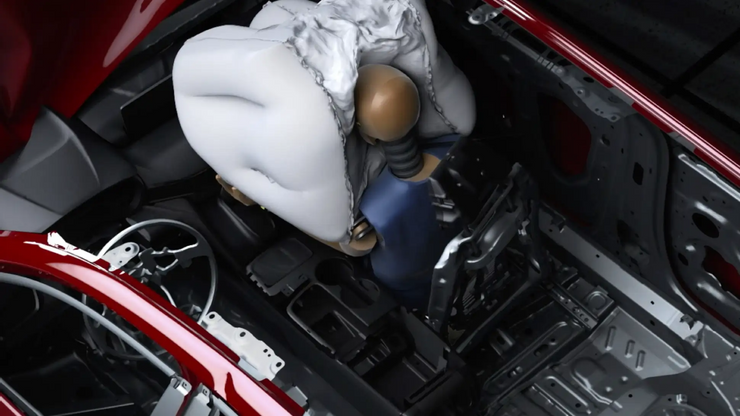
The standard Honda Sensing suite of active safety and driver assistive technologies uses a new single-camera system that provides a wider field of view than the previous radar+camera-based system. Combined with software advances and a new, more powerful processor, the system is also capable of more quickly and accurately identifying pedestrians, bicyclists and other vehicles, along with road lines and road signs.
The new camera-based system improves on existing functionality, such as more natural brake application and quicker reactions when using Adaptive Cruise Control. It also has more linear and natural steering action when using the Lane-Keeping Assist System. With the addition of 8 sonar sensors, the Civic will have, for the first time, Low-Speed Braking Control, and front and rear false-start prevention.
Pedestrian safety was not overlooked in the engineering of the new Civic. It has a new front bumper beam safety plate designed to decrease leg injuries and the bonnet incorporates an embossed inner structure designed to reduce injuries to the head if the pedestrian hits the bonnet.
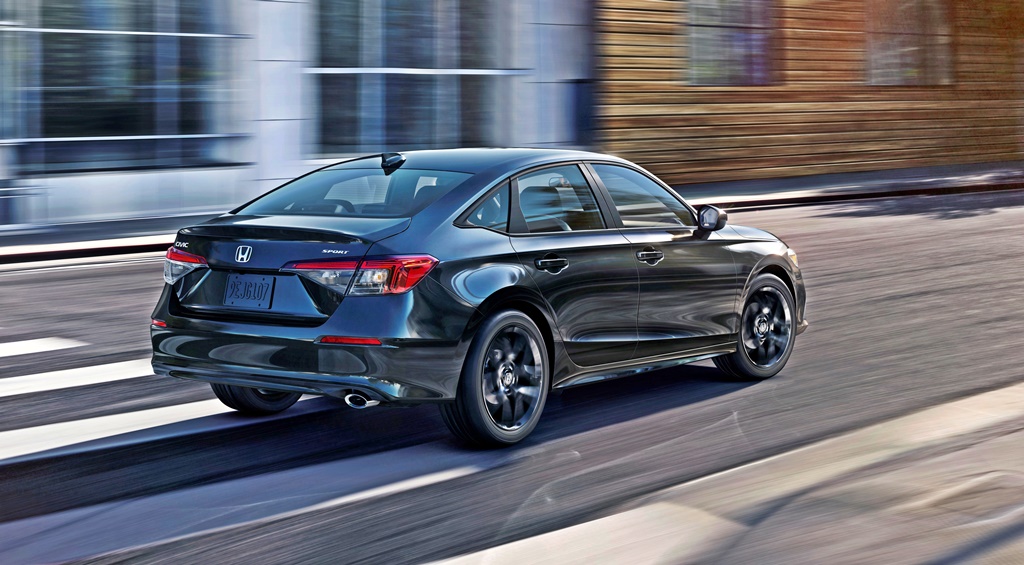
New Civic for ASEAN
As has been the case for many generations now, the model revealed in America may not be identical to the one we will get in Malaysia. Honda designers consider preferences influenced by culture and make small changes here and there. However, the engineering would be largely similar since that part has been developed at great cost and to make too many modifications would be an unnecessary expense.
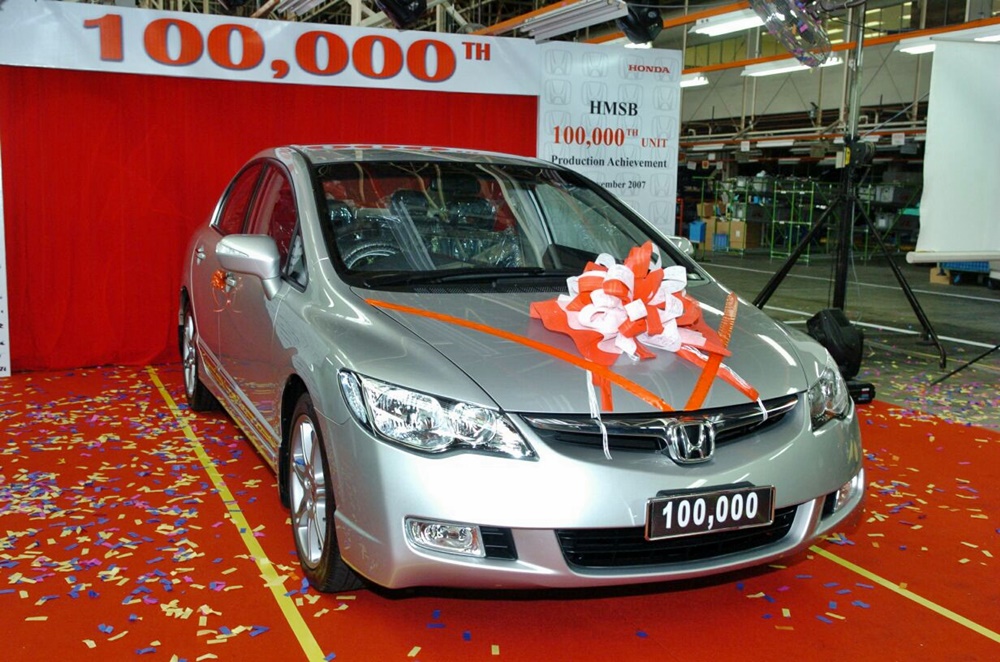
As it takes up to a year for a new Honda model to be in Malaysian showrooms, this new Civic generation will probably appear in early 2022. When the model is launched in Thailand, then you can expect the Malaysian debut to occur within months. The only thing that may slow down the process is that the Civic is assembled locally at the Melaka plant, and Honda Malaysia tries to localise parts supply as much as possible. This is an extra step that adds time, instead of just getting all the parts in the pack from the main factory in Thailand.
Do you like the new Civic? If you prefer the current one and want to get one before stocks run out, you can locate an authorised dealer at www.honda.com.my.
Honda’s new premium cabin air filter can lower infection risk from COVID-19





